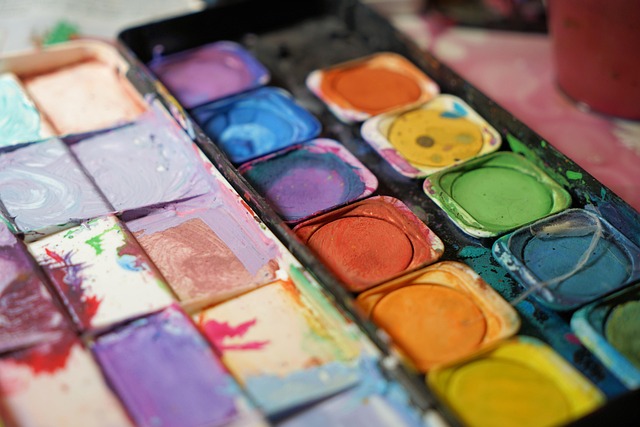
“The Ultimate Guide to Choosing the Perfect Paint Palette for Your Masterpiece”
The Ultimate Guide to Choosing the Perfect Paint Palette for Your Masterpiece
Every artist knows that the paint palette is not just a tool; it is a gateway to expressing creativity and emotion. The colors you select can evoke feelings, tell stories, and breathe life into your canvas. Whether you are a seasoned painter or just embarking on your artistic journey, mastering the art of palette selection is essential to creating stunning masterpieces.
Understanding Color Theory
Before you dive into selecting colors for your palette, it’s crucial to have a basic understanding of color theory. Colors can be categorized into three main groups: primary, secondary, and tertiary. Each color evokes different emotions and can dramatically alter the mood of your artwork. For instance, warm colors like red and orange can create a sense of warmth and excitement, while cool colors like blue and green can bring feelings of calm and tranquility.
Choosing a Color Palette
Once you have a grasp of color theory, you can start choosing your palette. Here are several popular types of palettes to consider:
- Monochromatic Palette: This palette uses variations of a single hue. It’s perfect for creating depth and unity in your artwork.
- Analogous Palette: Comprised of colors that are next to each other on the color wheel, this palette offers harmonious connections and is pleasing to the eye.
- Complementary Palette: By using colors opposite each other on the color wheel, this palette creates vibrant contrasts that can make your artwork stand out.
- Triadic Palette: This combination uses three colors that are evenly spaced around the color wheel, providing a dynamic and balanced look to your art.
Experimenting with Your Palette
Don’t shy away from experimenting. Your palette is a reflection of your unique voice as an artist! Try mixing colors and creating variations to find combinations that resonate with your personal style. Remember, art is not just about following rules; it’s about expressing yourself!
Building Your Palette
When building your paint palette, consider the following tips:
- Start with the Basics: Invest in primary colors, white, and black, and expand from there.
- Incorporate Earth Tones: Colors like ochre, sienna, and burnt umber can ground your artwork.
- Consider Lighting: The way light hits your colors will affect their appearance. Test your palette in various lighting conditions.
- Stay Organized: Keep your palette neat and organize colors in a way that feels intuitive to you.
Finding Inspiration
Sometimes, the best way to ignite your creativity is to look for inspiration. Consider studying the works of famous artists or exploring natural landscapes. Take photos or collect swatches of colors that speak to you. Nature offers a never-ending source of inspiration, from the soft pastels of a sunrise to the vibrant hues of a blooming garden.
Listening to Your Instincts
Ultimately, the best paint palette is the one that speaks to you. Trust your instincts; they are your best guide. As you experiment and refine your palette, remember that artistic expression is a journey—embrace the process and enjoy every brushstroke as you create your masterpiece.


